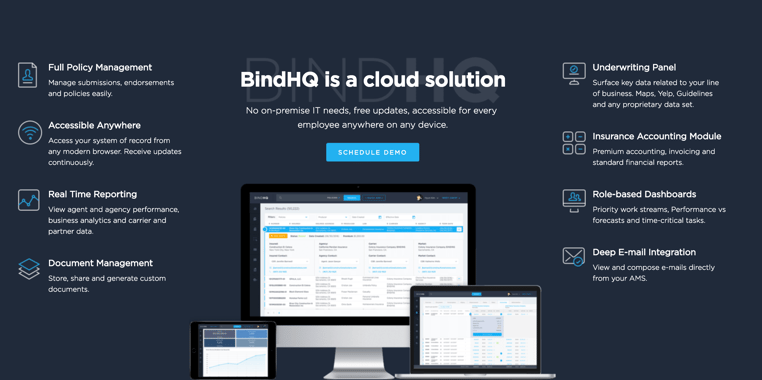
The attention budget: how to keep employees focused
Attention is the “currency” of any employee.
I somehow made it to my mid-20s before I seriously engaged in budgeting.
I’d earn what I could, spend it on what felt best at the time, and hope for the best. I had no financial strategy at all, and I was afraid to actually check my balance.
As a result, I barely knew where my money came from or went. The result was waste.
Looking back on my professional life, I see clear parallels. I would work on whatever was being shouted about the most, or whatever I found interesting at the time, and there were vast areas of my roles that I neglected.
I was being reactive and instinctual, rather than strategic, about where I invested my attention.
I do, however, recall joking with fellow developers about how many “effort sticks” we had, representing our finite attention and energy. We would say things like “I put all my effort sticks into setting up that server and I don’t have enough left to fix this bug”.
That metaphor has never left me, partly because there’s truth in it - attention is the “currency” of any employee. It’s our primary resource, our raw material.

How To Invest Your Attention Wisely
As such, we must be very careful to “invest” our attention wisely. If you are a manager or a boss, then you have to help your employees do the same thing.
Here are some of the parallels between attention and budgets:
- Attention, just like money, is “fungible” - meaning, it can be “spent” in all sorts of ways. It’s fluid.
- Attention is finite - we only have so much of it to spend.
- Attention can be “borrowed” - we can stay up late, or over-caffeinate, but we repay the “loan” later (e.g. being tired, clumsy the next day).
- How we “spend” attention affects those around us - if I am foolish about what I spend my attention on at work, the organization I work with does not flourish as much as it could.
Creating an Attention Budget
In the same way that I’ve learned to be strategic about my money, as I’ve entered the mid-career phase, I see great value in intentionally “budgeting” my attention.
I see roughly 7 “buckets” where I spend my attention: Your “buckets” may be different!
- Priority work - this is ideally, where I’d spend most of my time. It’s where I make a difference.
- Toil - the day-to-day of fixing issues, keeping things running, putting out fires, responding to alarms and reviewing reports and metrics
- Collateral work - this is related to priority work, but it doesn’t move the goal forward. It’s a necessary evil, but not the true priority. Think of sales follow-up for a producer.
- Support - responding to customer requests and questions
- Strategic work - considering the roadmap, team structure, and how we can best meet business goals
- Tactical work - improving processes, team dynamics, coaching
- Personal and Professional Development (PPD) - training, research
I would then ask two questions of myself and my team:
- “How is my attention currently divided between these buckets?”
- “How SHOULD my attention be divided between these buckets?”.
The delta between [1] and [2] should inform changes to my “attention budget”:

No Silver Bullets
There’s a temptation to push this kind of thinking too far and obsessively track everything. Unlike with finances, I cannot track attention “to the penny”.
In fact, the more effort I put into tracking my time, the less work I’m doing on anything else!
Whilst it’s worth having a broad “budget” for your attention, diminishing returns becomes an issue fairly quickly if you’re trying to time track. Just getting the broad strokes is enough for most - don’t tyrannise yourself!
Budget profiles
One size does not fit all; what is best for you will depend upon your organisation profile, your temperament, your skillset, your role, and your interests, as well as the characteristics of your colleagues.
Some of us naturally gravitate to reactive support work, for example, whereas others are more inclined to long-term projects.
The key in a budget profile is am I spending my attention in a way that benefits the organisation and harmonises with my team, not to arbitrarily fit in a “box”.
That said, let’s look at some budget profiles - 3 that are undesirable, and 3 that are desirable.
Wastrels and Scoundrels
Caricatures of employees who are not budgeting their attention well.
The Shopaholic
The shopaholic is not thinking long term, but is flailing around, from item to item, and creating attention debt in the process.
This person may well perceive themselves to be heroic, but really, the irresponsible spender is creating an “attention crisis” in the making. Tasks are left unfinished as the next new support call comes in.
They try to do too much and as a result, they might not accomplish much. The shopaholic is undisciplined and completes nothing.
The Hoarder
The opposite pathology to the shopaholic, the hoarder is constantly rethinking their strategy, planning their gameplan, but not actually doing any work on items that directly affect a customer. The hoarder is trying to create the perfect all-singing-all-dancing system for their job, which can be a worthy goal, but for the hoarder, it’s disconnected from any sense of value to the customer - it’s just strategy for the sake of strategy.
The hoarder scoffs at YAGNI (You Ain’t Gonna Need It) but whilst the hoarder tries to build the perfect house, the authorities come round and repossess it - the company goes bust because nothing of actionable value is getting delivered.
The SEPper (Someone Else’s Problem)
SEPpers draws aggressive boundaries around what is and isn’t “their problem”. Project X is tanking? “Someone else’s problem, I’m on Project Y”. The SEPper jealously guards their attention budget, but only uses it for very specific purposes and is inflexible.
The Prudent
Caricatures of employees who are budgeting their attention successfully.
The Household Member
The prudent household member budgets carefully, investing attention based on what will benefit the “household” - this is an employee who carefully considers the “shape” of the organization, the gaps in their skills and the skills of others, and makes an effort to meet the needs of the organization.
The “household member” wants the organization to succeed as a whole, and the best way that can be achieved is for everybody to use their “attention budget” wisely.
In a household, when the one who usually cooks is ill, someone else must step up to the stove, and likewise, if the executive team is swamped, an employee more temperamentally inclined towards other types of work may step into the gap.
The “household member” employee periodically reviews attention budgets with the rest of the team.
“I’m spending a lot on toil, is that what the business really needs right now? I’ve noticed some tactical problems with our weekly meetings, how about these ideas...”
The Investor
The investor will look at the long-term requirements of the organization and invest accordingly.
Much like a good version of the hoarder, the investor cares about strategic vision, but has a more tempered and balanced approach that considers the long-term in the context of short-term customer experience.
The investor will balance a “dollar today” against “five dollars tomorrow” by considering the whole picture - team structure, customer base, strategic goals, performance, training and more.
The investor will encourage personal development, but will find ways of gaining “interest” on that investment to benefit the organization and its products.

The Waste Finder
Every organization has waste; it’s a function of all human endeavor.
The waste finder excels in finding waste that may not be obvious to the rest of the organization. Such waste may not even be outright loss; it may be something more like “we are spending 40% of our time on support, but 80% of those issues are with this specific problem, so if we can address it strategically, we can reduce our support burden to 20% within a month.”
The waste finder is often a “numbers person”, and will use data to help make arguments. New starters in organisations are often fantastic waste finders, before organisational taint sets in.
Wrapping it up
An attention budget is a tool for looking at how employees are allocating their primary resource - attention - with the goal of identifying gaps and reducing waste.
Used prudently, this metaphor can help us to invest our attention in a way that helps our organization, our colleagues and ourselves to flourish. It’s not magic, it doesn’t tell the full story, but it’s a useful tool in our toolbox.